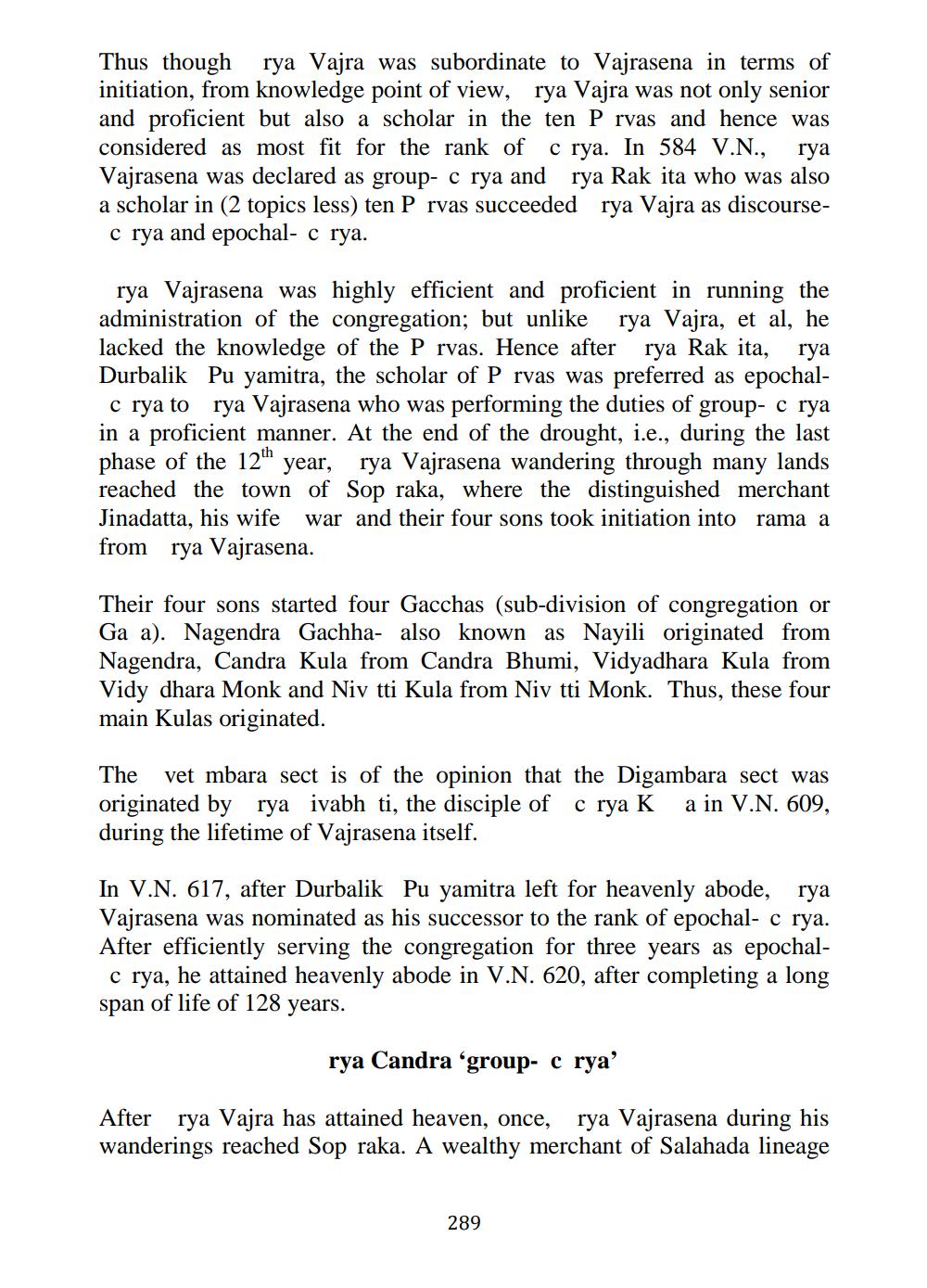________________
Thus though rya Vajra was subordinate to Vajrasena in terms of initiation, from knowledge point of view, rya Vajra was not only senior and proficient but also a scholar in the considered as most fit for the rank of Vajrasena was declared as group- c rya and a scholar in (2 topics less) ten P rvas succeeded crya and epochal- c rya.
ten P rvas and hence was c rya. In 584 V.N., rya rya Rak ita who was also rya Vajra as discourse
rya Vajrasena was highly efficient and proficient in running the administration of the congregation; but unlike rya Vajra, et al, he lacked the knowledge of the P rvas. Hence after rya Rak ita, rya Durbalik Pu yamitra, the scholar of P rvas was preferred as epochalcrya to rya Vajrasena who was performing the duties of group- c rya in a proficient manner. At the end of the drought, i.e., during the last
phase of the 12th year, rya Vajrasena wandering through many lands
reached the town of Sop raka, where the distinguished merchant Jinadatta, his wife war and their four sons took initiation into rama a from rya Vajrasena.
Their four sons started four Gacchas (sub-division of congregation or Ga a). Nagendra Gachha- also known as Nayili originated from Nagendra, Candra Kula from Candra Bhumi, Vidyadhara Kula from Vidy dhara Monk and Niv tti Kula from Niv tti Monk. Thus, these four main Kulas originated.
The vet mbara sect is of the opinion that the Digambara sect was originated by rya ivabh ti, the disciple of c rya K a in V.N. 609, during the lifetime of Vajrasena itself.
rya
In V.N. 617, after Durbalik Pu yamitra left for heavenly abode, Vajrasena was nominated as his successor to the rank of epochal- c rya. After efficiently serving the congregation for three years as epochalc rya, he attained heavenly abode in V.N. 620, after completing a long span of life of 128 years.
rya Candra 'group- c rya'
After rya Vajra has attained heaven, once, rya Vajrasena during his wanderings reached Sop raka. A wealthy merchant of Salahada lineage
289




